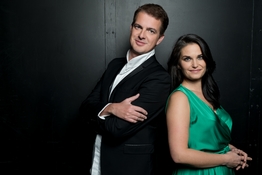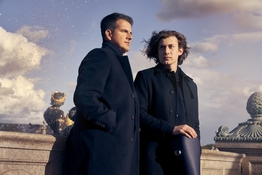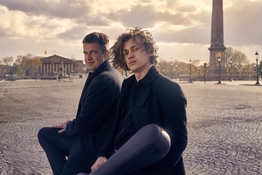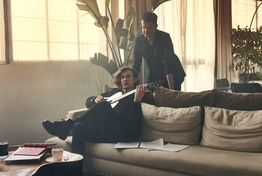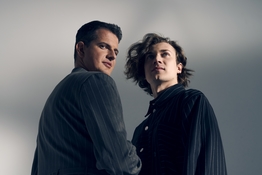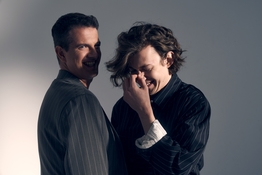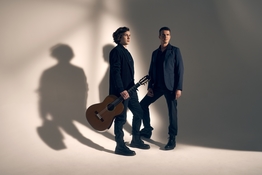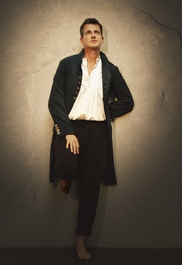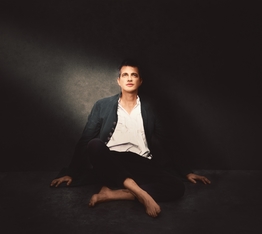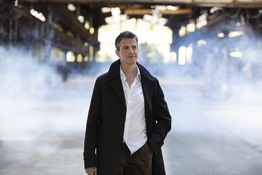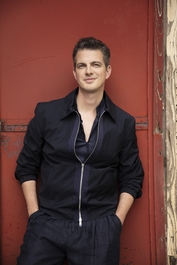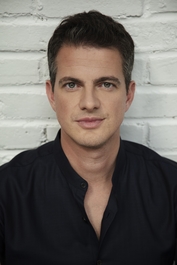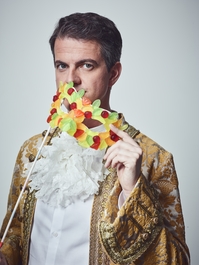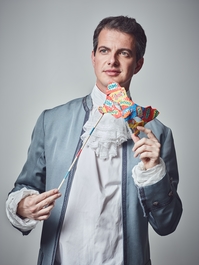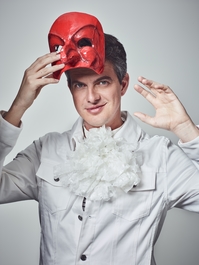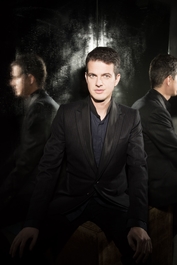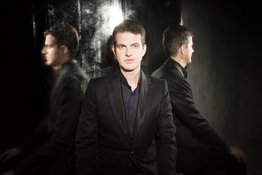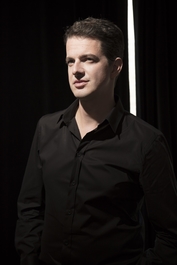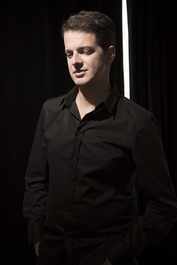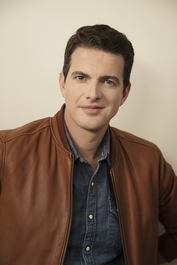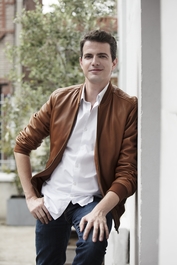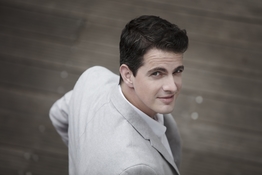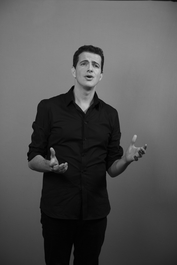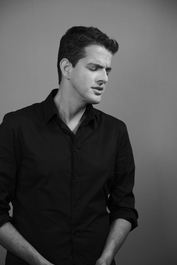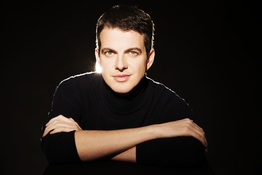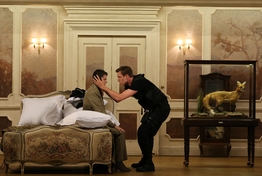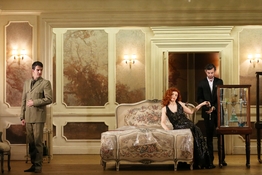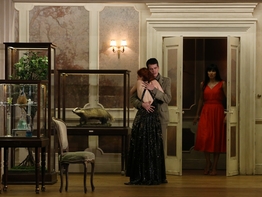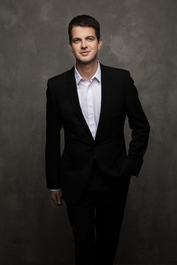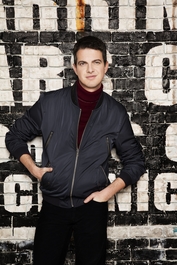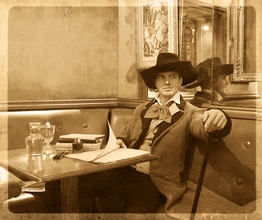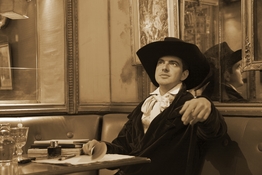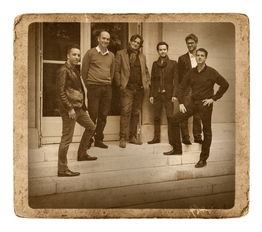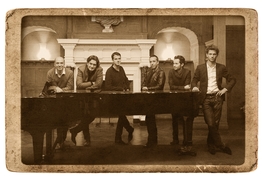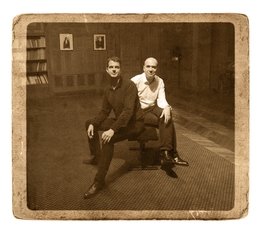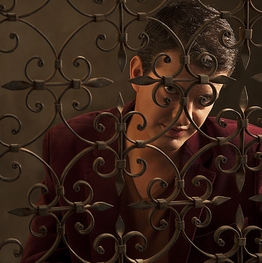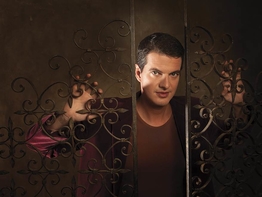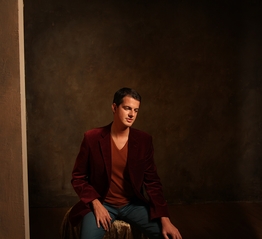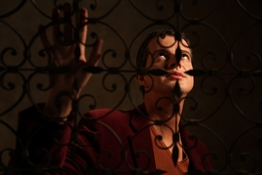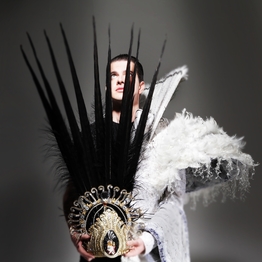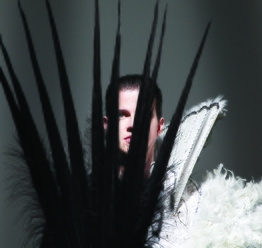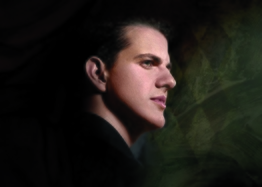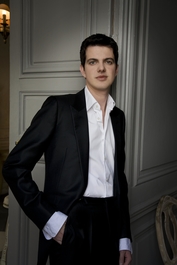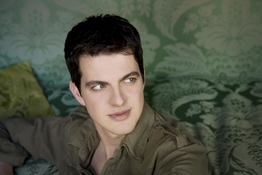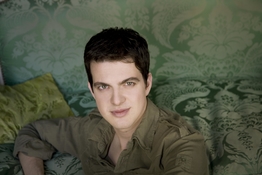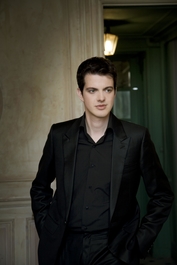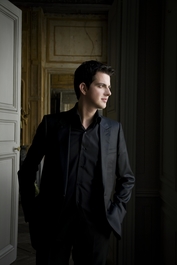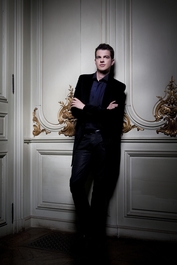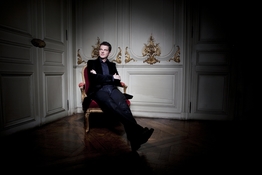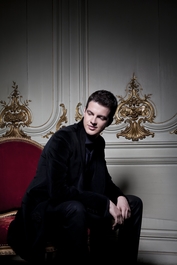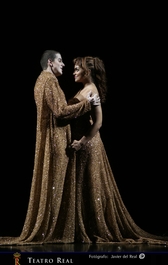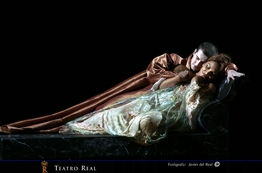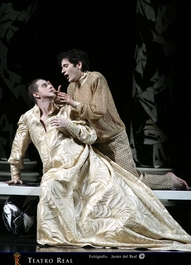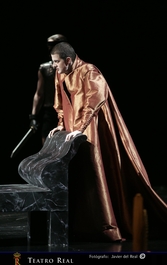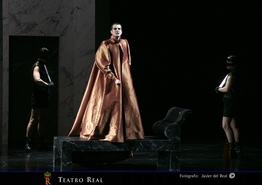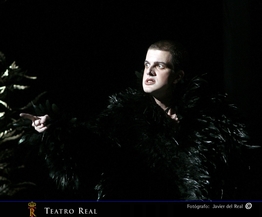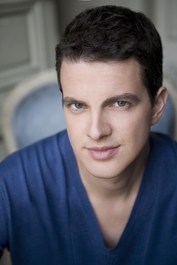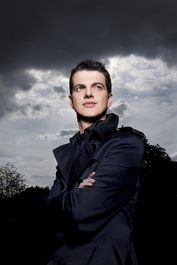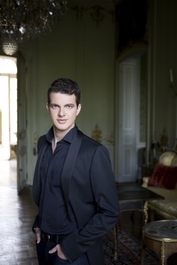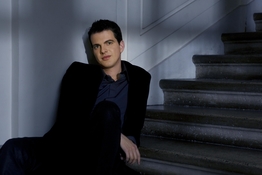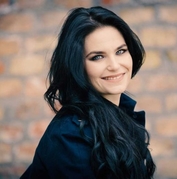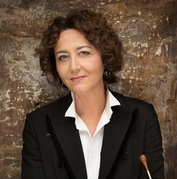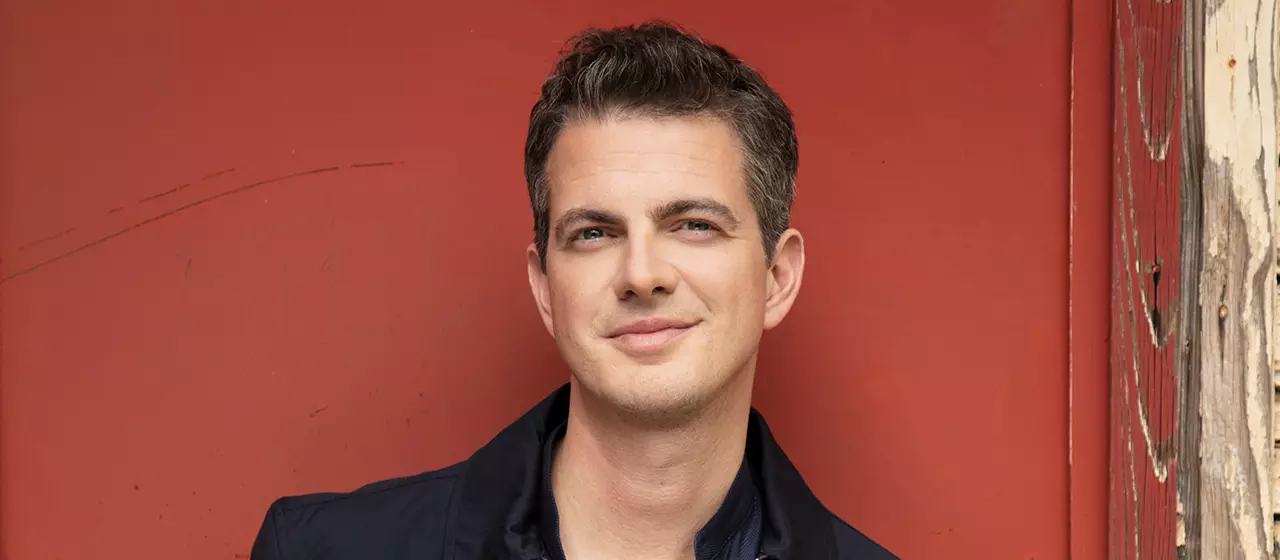

Philippe Jaroussky
News
Il Boemo
Countertenor Philippe Jaroussky and soprano Emőke Baráth appear on the soundtrack of a 2022 film by the award-winning Czech director Petr Václav. Called Il Boemo (The Bohemian), it tells the story of the Prague-born composer Josef Mysliveček (1737–1781).
If Mysliveček’s name is relatively unfamiliar today, he was a major figure on Europe’s operatic scene in the 18th century, achieving particular renown in Venice, Naples and Munich. He composed more than two dozen operas in all, and arias from eight of them feature on this album. Especially prominent is one of his most important works, L’olimpiade, composed to a libretto by the celebrated poet Metastasio and first performed in Naples in 1778 to celebrate the nameday of King Charles III of Spain.
Mysliveček is also notable for being a friend and colleague of a composer almost 20 years his junior: Wolfgang Amadeus Mozart. Mysliveček first met Mozart and his father Leopold in Bologna in 1770, and Mysliveček’s knowledge and mastery of Italian operatic style proved useful to Mozart (then only 14) in the composition of the often dazzlingly virtuosic Mitridate, re di Ponto, premiered that same year in Milan.
Both Philippe Jaroussky and Emőke Baráth make on-screen appearances in Il Boemo, as operatic performers. Among the other singers on the album are sopranos Simona Šaturová, Raffaella Milanesi and Giulia Semenzato and tenor Krystian Adam. Václav Luks conducts Collegium 1704, the period-instrument ensemble he founded in Prague in 2005.
Passacalle de la Follie
Countertenor Philippe Jaroussky joins the instrumentalists of L’Arpeggiata, led by Christina Pluhar on the theorbo, for a colourful, often amorous programme. It focuses on the air de cour, a ‘courtly song’ much in favour in France during the reign of Louis XIII in the first half of the 17th century. Accompanied by lute or theorbo, and generally strophic in form, the air de cour is soulful and refined in its expression of love, regret and spiritual reflection.
The album takes its title, Passacaille de la Follie – Passacaglia of Madness, from Yo soy la locura, a song written to a Spanish text by the court musician Henri Le Bailly. Echoing the theme of madness or folly engendered by love is a purely instrumental improvisation, arranged by Christina Pluhar, on Les Folies d’Espagne, whose melody and harmony inspired numerous sets of variations in the Baroque era. Among the composers to feature on Passacaille de la Follie are the principal exponents of the air de cour: Pierre Guédron, Antoine Boësset, Étienne Moulinié and Michel Lambert.
The earlier decades of the seventeenth century were a troubled time for France and Europe as a whole. Louis XIII was just nine years old when he came to the throne in 1610 after the murder of his father, Henri IV. His younger brother, Gaston d’Orléans, attempted on several occasions to undermine his rule through conspiracies and plots. For all that, the arts flourished during Louis XIII’s reign. The King painted, played the guitar, composed and had a passion for dance, while Gaston also maintained an ensemble of instrumentalists and singers. Prominent figures in society gathered in salons for conversation and culture, showing a particular appreciation for the sophisticated and refined singing of airs de cour.
In Autumn 2022, Jaroussky, Pluhar and L’Arpeggiata performed this repertoire to a capacity audience at New York’s Zankel Hall, part of Carnegie Hall. Parterre praised Philippe Jaroussky as an artist “in his vocal prime with a tone that is both rounded and ringing with a sweet ingratiating timbre and tonal bloom. This is not a straight piercing tone but one with a delicate vibrato which Jaroussky could subtract or add in for expression and musical effect.” Concerto.net found that the performance “offered nothing less than enchantment,” going on to say that, “All of the songs, without exception, transported us back three centuries, the dulcet sounds and tender vocal lines, never sentimental or overly-emotional ...
The players were superlative, the notes were inspired …”
Philippe Jaroussky brings his musical and dramatic powers to a programme of Italian oratorios of the baroque era
“Jaroussky’s expressiveness is irresistible,” according to BBC Music Magazine. “He squeezes maximum nuance from each word, sighing, languishing, and lamenting with utter conviction.”
The French countertenor now brings his musical and dramatic powers to a programme of 11 arias from Italian oratorios of the baroque era, complemented by three instrumental sinfonie performed by Ensemble Artaserse. Featuring five world premiere recordings, the album, La vanità del mondo, takes its name from an oratorio by Pietro Torri that was first heard in Brussels in 1706; Jaroussky performs an aria (the lively, lilting ‘Esiliatevi, pene funeste’) which is assigned to the allegorical figure of Piacere – in other words, Pleasure.
The earliest Jaroussky recording in the Erato catalogue, made in 1999, is his interpretation of Ismaele in the oratorio Sedecia, re di Gerusalemme by Alessandro Scarlatti, who was born in Palermo and made his career primarily in Rome and Naples. Now Jaroussky returns to Scarlatti for a soothing, but soulful aria from La Giuditta, based on the biblical story of Judith.
Another intimate aria, this time by Handel, is the most familiar number on the album – though in its guise as ‘Lascia ch’io pianga’ rather than, as here, ‘Lascia la spina’. This version of the aria appeared in his oratorio Il trionfo del Tempo e del Disinganno, composed during the highly formative period he spent in Rome in the first decade of the 18th century. Handel wisely repurposed the music – a haunting sarabande originally heard in Almira, a little-known opera he wrote for Hamburg in 1705 – just a few years later in London, when he produced one of his most splendid operas, Rinaldo.
The young Handel was in Italy at a time when the Pope had banned opera from the Eternal City’s stages. Fortunately, there was no shortage of quasi-operatic theatricality and brilliance in the oratorios being written in Rome and in such centres as Naples, Venice and Lombardy. Native Italian composers predominate on the album, but Handel is not the only north German on the programme: it also includes an aria by Johann Adolf Hasse from an Italian-language oratorio first performed in Dresden in 1750, La Conversione di Sant’Agostino.
All five world premiere recordings on the album are of arias by Italian composers. Caldara, Fago and Marcello are familiar names to baroque aficionados – and Jaroussky devoted an entire album to Caldara back in 2010 – but Fortunato Chelleri will be more of a discovery. Born in Parma, he made his career primarily in Germany and his oratorio Dio al Sinai was first performed in Dresden in 1731.
Philippe Jaroussky has the following to say about La vanità del mondo:
“I try to think of each new album as a project that will complement my existing recordings, which include many arias from baroque operas and motets, but not from Italian oratorio – apart from my first Warner Classics recording, Scarlatti’s Sedecia, Re di Gerusalemme.
“That being said, I am very fond of oratorio as a genre, because I think composers of this period often give of their best when setting the great stories of the Old Testament. It takes a stronger sense of spirituality to embody a saint – or even to portray God himself – in music than to give expression to the amorous passions of a prince or a queen. Towards the end of the 17th century a characteristic oratorio style even emerged, making more sustained use of counterpoint than in opera. And if oratorio stories were more static, they allowed for deeper reflection on the place of mankind in the universe, which I think resonates with particular intensity in this year of pandemic.
“In some senses, it is a miracle that this album ever happened. It was originally scheduled for recording in April 2020, but that was prevented by lockdown. Then we didn’t know until the last moment whether we would be able to get together in June to record it in time for release this year. As it turned out, being able to make music again after several months was a liberating experience for me and for the musicians of Artaserse. La vanità del mondo – the vanity of the world – seemed to be the right title for the album. Maybe the current crisis – and these arias written some 300 years ago – will awake our consciences.”
Jaroussky Passion set to be released this Autumn
It seems hard to believe that Philippe Jaroussky has two decades of career under his belt, but Jaroussky Passion marks 20 years since the French countertenor made his professional debut and commenced his rapid ascent to stardom.
The triple album, comprising both new and previously released recordings, is a sequel to the Jaroussky anthology The Voice (La Voix des rêves), which was released seven years ago.
The new items range span six centuries and showcase the breadth and variety of Jaroussky’s interests and artistry.
For his first recording of music by the Elizabethan composer John Dowland, the famous lament ‘Flow my tears’, he partners with Erato guitarist Thibaut Garcia.
The seductively lilting aria ‘Mentre dormi’, from the opera L’Olimpiade by the Czech composer Josef Mysliveček, brings his first collaboration with the Prague-based baroque orchestra Collegium 1704 and its founder-conductor Václav Luks. This performance will appear on the soundtrack of the film Il Boemo – directed by Petr Václav and due for release in 2020 – which tells the story of Mysliveček, who was a friend of Mozart.
Jaroussky’s forthcoming album of Schubert lieder with his regular pianist Jérôme Ducros, due for release in early 2020, is trailed with two favourite songs, ‘Du bist die Ruh’ and ‘Ständchen’.
Thibaut Garcia joins him again for a famous and haunting song from 1945, ‘Les feuilles mortes’ by Joseph Kosma, which sets words by Jacques Prévert and is known around the English-speaking world as ‘Autumn Leaves’.
For ‘Oh my love’ by John Lennon and Yoko Ono, Jaroussky teams up with French-American singer Rosemary Sandley, known as a member of the group Moriarty, and Brazilian cellist Dom La Nena.
And in ‘Cet air’ he duets with the song’s composer Matthieu Chedid (also known simply as -M- and the winner of no fewer than 13 of France’s prestigious Victoires de la Musique awards), who also provides the guitar accompaniment. This recording originated on the radio programme Grand Atelier, broadcast on France Inter.
Jaroussky himself has chosen the highlights from recent albums that form the greater part of the collection. They derive from programmes he has recorded with his own ensemble Artaserse (Pietà, The Handel Album), with Andrea Marcon and the Venice Baroque Orchestra (albums devoted to Porpora and Farinelli), and with Diego Fasolis and I Barocchisti (Pergolesi’s Stabat Mater, Gluck’s Orfeo ed Euridice and La storia di Orfeo); from the song recital Green, with Jérôme Ducros and the Quatuor Ebène, and from collaborations with Christina Pluhar and L’Arpeggiata (Music for a While) and the Boston Early Music Festival Orchestra (Steffani’s opera Niobe).
As Jaroussky points out: “It was you, my fans, who chose the first track for me, giving it more than seven million views on YouTube in just two years: Vivaldi’s beautiful ‘Sileant Zephyri’. He’s definitely been my lucky composer!” Among the other composers on the album are Bach, Handel, Telemann, Gluck, Monteverdi, Cavalli, Purcell, Saint-Saëns, Massenet and Charles Trenet, while the conductors and ensembles also include Emmanuelle Haïm with Le Concert d’Astrée and William Christie with Les Arts Florissants.
The third part of this anniversary trilogy is called Philippe & Friends. Jaroussky has compiled it “from the many duets I’ve had the opportunity to record with so many wonderful artists, because for me musical friendships are so very important.” That list of friends includes such singers as Cecilia Bartoli, Marie-Nicole Lemieux, Emőke Baráth, Karina Gauvin, Nathalie Stutzmann, Julia Lezhneva, Anne Sofie von Otter, Sophie Karthäuser and Max Emanuel Cencic, and instrumentalists like Emmanuel Pahud, Renaud Capuçon and Gautier Capuçon.
Philippe Jaroussky clearly enjoys keeping good company, which perhaps also explains his long and fruitful relationship with his record label. He is looking forward to the next phase of his career. “Even after all these years, my passion for music is undimmed,” he says, “and I hope to keep sharing it for a long time yet!”
Philippe Jaroussky is the cover star on the latest issue of Gramophone magazine
"A countertenor nowadays is firstly an artist," declares Philippe Jaroussky on the cover of Gramophone's April 2017 edition. The French singer capable of seraphic highs is the most famous countertenor of his generation. He talks to Gramophone about his new album La Storia di Orfeo, drawn from three Baroque retellings of the Orpheus myth (Monteverdi, Rossi and Sartorio), in which he transforms Monteverdi's eponymous hero from tenor to countertenor for the first time, with compelling results.
Philippe Jaroussky in the underworld: new album La Storia di Orfeo
In La storia di Orfeo, star countertenor Philippe Jaroussky realises a long-held dream as he retells the Orpheus myth through the music of three Italian composers of the early Baroque: Claudio Monteverdi, born exactly 350 years ago, and his younger contemporaries Luigi Rossi and Antonio Sartorio.
Monteverdi’s setting of the myth, L’Orfeo of 1607, is generally considered the first real opera. Over the subsequent centuries the story of Orpheus – the divinely gifted poet who descends to Hades to rescue his dead wife, Euridice – has maintained its hold on composers: among the notable operatic treatments of the myth are those by Gluck, Offenbach (a comic take) and, in our own time, Harrison Birtwistle, Philip Glass and Erato artist Christina Pluhar.
Jaroussky himself has starred in Gluck’s opera on stage and has taken the role of La speranza (Hope) in Monteverdi’s version, which was conceived with a tenor in the title role, though Rossi and Sartorio opted for castrati. In La storia di Orfeo, working with conductor Diego Fasolis, the musicologically-inclined singer has assembled a pasticcio of numbers by Monteverdi, Rossi and Sartorio that tells the entire story: the happiness on earth of Orfeo and Euridice, sung here by the Hungarian soprano Emőke Baráth; the death of Euridice, poisoned by a snake; Orfeo’s descent to Hades, which brings the deeply moving aria by Monteverdi, ‘Possente spirto’ in which the poet begs the boatman Charon to ferry him over the river Styx; his reunion with Euridice, and as they return to the land of the living, the sad moment when he loses her again forever.
As Jaroussky explains: “La storia di Orfeo is conceived as a kind of opera in miniature or as a cantata for two solo voices and chorus, and features just two characters: Orpheus and Eurydice. The three operas [Monteverdi, Rossi, Sartorio] focus on different aspects of the story …. The highpoint of Monteverdi’s work is an aria that has remained without parallel in the history of opera, the magical ‘Possente spirto’, which I have the temerity to perform here as a countertenor, for the first time on record.”
Jaroussky had long sensed that ”I could hear my own voice in that aria and that I could bring another colour to Monteverdi’s Orfeo”. He feels that the character, in his various operatic incarnations, represents “something special for a singer … He is almost superhuman, his singing has a magical power and he inspired so many composers to write roles with a mystical, spiritual element and which express a particular sensibility. It is a matter of finding the balance in Orfeo: the demi-god, who has such power through music, and who is yet deeply human”
Jaroussky has sought to create “a real logic in the dramatic flow of the album … This is not just a series of extracts from operas with no connections between them.” Both Rossi’s opera, first performed in Paris in 1647, and Sartorio’s, first seen in Venice in 1672, are more elaborate works than Monteverdi’s, and very differently structured. For instance, Jaroussky has chosen Sartorio’s overture, which he describes as “the most sophisticated and developed” and has given Emőke Baráth an aria by Rossi – in Monteverdi’s version, Euridice does not have an extended solo. Jaroussky and Baráth both starred in the Erato recording of Handel’s Partenope, released in 2015, and Gramophone described the soprano’s performance as “exquisite, persuasive …. The Hungarian singer grows from tentative delicacy to ringing joy”. Jaroussky chose her for the recording after hearing her in an opera by yet another contemporary of Monteverdi, Francesco Cavalli. “She has a feeling for this repertoire. Her voice is powerful and full of colour, yet fragile. She can give substance to Euridice.”
The French countertenor has already collaborated with the Swiss conductor Diego Fasolis and I Barocchisti, his Lugano-based ensemble, on Erato recordings of Handel’s Faramondo and Pergolesi’s Stabat Mater. “Diego puts an emphasis on the opera’s italianità [Italian essence],” says Jaroussky, “… the flavour of text, the rhythm, the harmony, he supports the soloists and the chorus [the Swiss-Italian Radio Chorus], transmitting a positive energy. We have been working together for a long time … I can have a dialogue with him. He’s a conductor I trust.”
Philippe Jaroussky's new album La Storia di Orfeo is out 3 March, 2017.
Philippe Jaroussky sings at the inaugural concert of the Elbphilharmonie
It was all eyes and ears on Hamburg last night for the first of two highly-anticipated concerts inaugurating Germany's lavish new concert hall, the Hamburg Elbphilharmonie. French countertenor Philippe Jaroussky, the architecturally stunning venue's first Artist in Residence, had the honour of performing for a packed hall of VIPs, including Germany's chancellor Angela Merkel. Jaroussky sang two Italian Baroque arias, by Cavalieri and Caccini, in a performance that is now available online, giving music lovers around the world a first look at the Elbphilharmonie's elegantly modern interior.
To celebrate the opening of the hall and his residency at the Elbphilharmonie, Jaroussky has chosen his favourite tracks by composers who hail from or left an indelible mark on the city of Hamburg, from Telemann (as heard on his new album of Bach and Telemann cantatas) to Mahler. Philippe's playlist can be heard now on Apple Music.
Philippe Jaroussky: Singer of the Year in the 2016 ECHO Klassik Awards
French countertenor Philippe Jaroussky, crowned Singer of the Year in the 2016 ECHO Klassik Awards, accepted his prize tonight at the awards ceremony in Berlin. To honour the occasion, he also performed Händel's Lascia ch’io pianga in front of a live and televised audience.
It was one of twelve prizes for artists signed to Warner Classics and Erato labels in this year's ECHO Klassik Awards.
The coveted Male Singer of the Year award comes just as Philippe Jaroussky releases his first-ever album sung in German: Bach and Telemann Sacred Cantatas (including the much-loved ‘Ich habe genug’). Jaroussky is accompanied by the Freiburger Barockorchester, which also joined him for live performances at Berlin in 2015 as part of the singer’s season as artist-in-residence at the city’s historic Konzerthaus.
"When I devised this Bach and Telemann based programme there were several Bach cantatas I could have chosen," explains Jaroussky. "For me, 'Vergnügte Ruh' with organ solo was the obvious first one to record and at the same time I was actually quite keen to avoid 'Ich habe genug ' which was originally a cantata for bass but which has already been sung a lot by countertenors, mezzo sopranos and sopranos. There are several versions of it. I tried to avoid it but in the end I said to myself "if I am to record it, maybe it's now or never so let's just get on with it!'
"What I would like to do in this recording is make the most of the fame of these two Bach cantatas "Ich habe genug" and " Vergnügte Ruh" to lead the listener to discover the other two cantatas by Telemann."
Philippe Jaroussky's new album - Bach & Telemann Sacred Cantatas - is out in October.
Photo (c) BVMI / Markus Nass
VIDEO: Philippe Jaroussky sings Bach's 'Ich habe genug'
Ich habe genug - from Philippe Jaroussky's forthcoming album of Bach and Telemann, out in October 2016.
This programme of four religious cantatas by J.S. Bach and his contemporary Georg Philipp Telemann represents something of a new departure for Philippe Jaroussky: this is the first album that the French countertenor has devoted entirely to works sung in German.
Jaroussky already enjoys a considerable reputation in Germany – in July 2016 he was named Singer of the Year (for the second time) in the country’s top classical music awards, the ECHO Klassik.
In the past, Jaroussky has claimed to be intimidated by the perfection of Bach’s music, but he has now set down his interpretation of two of the master’s solo cantatas: the much-loved and deeply moving Ich habe genug, which in its opening movement recalls the sublime aria Erbarme dich from the St Matthew Passion and goes on to provide consolation in its third section ('Schlummert ein, ihr matten Augen'), and Vergnügte Ruh, beliebte Seelenlust, which opens with a wonderfully serene pastoral movement.
The two works by Telemann – 'Der am Ölberg zagende Jesus (Die stille Nacht umschloss) and Jesus liegt in letzten Zügen – take the portent and tragedy of Passiontide as their theme.
In late 2015 Jaroussky performed these works before a capacity audience at Berlin’s historic Konzerthaus, where he was artist-in-residence in the 2015-16 season; this concert marked the first time he had sung in German to a German audience. “The voice of an angel” were the words of the Berliner Tagesspiegel, which also drew attention to Jaroussky’s ability to express the drama of Telemann’s ‘Mount of Olives’ cantata. The Berliner Morgenpost, meanwhile, described him as “perhaps the most adventurous of today’s countertenors”. The writer also praised Jaroussky’s “exquisitely fine legato” and evoked the way his “plaintive descant glowed over the inky-black accompaniment” in the music of Telemann.
The instrumental ensemble in Berlin, as on this recording, was the Freiburger Barockorchester, which gave its first concert nearly 30 years ago and is established as one of the finest ensembles in the field of historically informed performance.
The 2016 Gramophone Awards shortlist has been revealed
The prestigious Gramophone Awards shortlist has been announced, showcasing the finest classical recordings over the past year, as chosen by the leading classical music magazine's critics and specialists.
Seventy-two recordings have been shortlisted across twelve categories. The top three recordings in each category will be revealed in next issue of the magazine, which goes on sale on August 12.
There are particularly strong contenders in the Vocal categories, with French soprano Sabine Devieilhe - noted by Gramophone for her "pure, sweet timbre and dazzling virtuosity" - up against the likes of Jonas Kaufmann and Max Emanuel Cencic for her multi-award-winning Mozart album The Weber Sisters (Recital category).
Fresh from singing David Bowie at the BBC Proms in London, French countertenor Philippe Jaroussky is in the running for another prize, this time as one of the cast-members in Il Pomo d'Oro's magnificent triple-album recording of the Handel opera Partenope, welcomed by Gramophone as “a landmark event”.
Joyce DiDonato is a strong candidate for the Solo Vocal category for her live double album from Wigmore Hall Joyce & Tony, with her esteemed recital partner Sir Antonio Pappano at the piano in everything from Italian arias to the Great American Songbook.
In Opera, Pappano's Verdi Aïda, the all-star triple album studio recording from Rome, is a clear frontrunner, with tenor Jonas Kaufmann as Rademes - he is nominated again in the same category for his Pagliacci. Gramophone declared soprano Anja Harteros "the most interesting Aïda on record since Callas"; both she and maestro Pappano have been nominated for the public-voted Artist of the Year.
Among the Instrumental selections, Bertrand Chamayou does his countryman Ravel proud in the complete works for solo piano on a double album.
The Concerto category sees young Norwegian violin virtuoso Vilde Frang holding her own alongside the likes of Janine Jansen, with the recent Gramophone Recording of the Month, her "urgently communicative" Britten and Korngold Violin Concertos.
The Chamber category sees two Erato string quartets nominated for two sublime releases: the French Quatuor Ebène for their Schubertalbum featuring baritone Matthias Goerne and cellist Gautier Capuçon, and the German Artemis Quartet's searing Brahms, their last recording with the late, lamented violist Friedemann Weigle, which cellist Eckart Runge sees as "imbued with a sense of warmth, immediacy, friendship and love that is interwoven with a more spiritual, timeless beauty”.
See the full shortlist of the 2016 Gramophone Award nominees here.
Related releases




























Upcoming Concerts
Tuesday
Thursday
Saturday
Friday
Sunday
